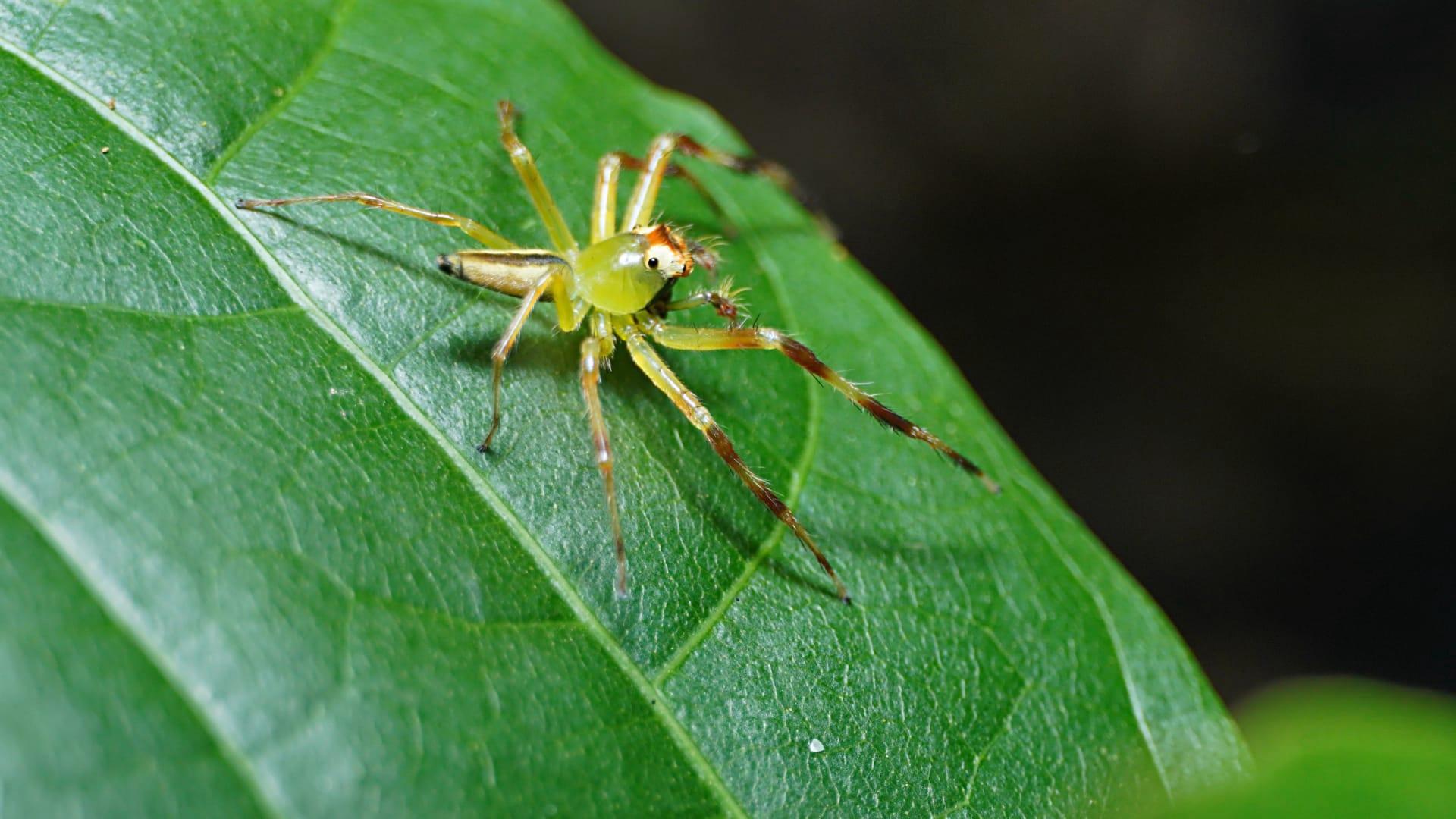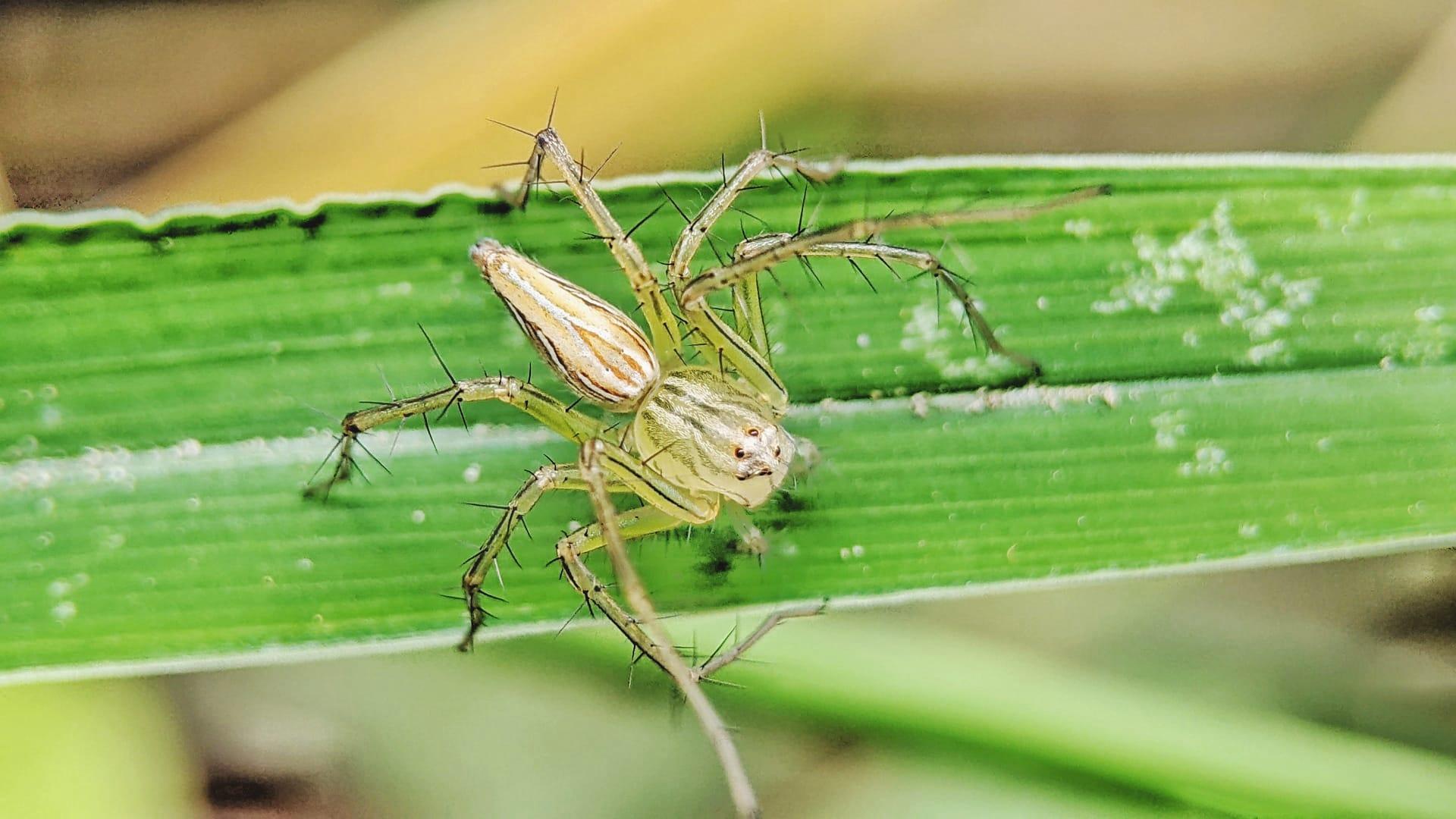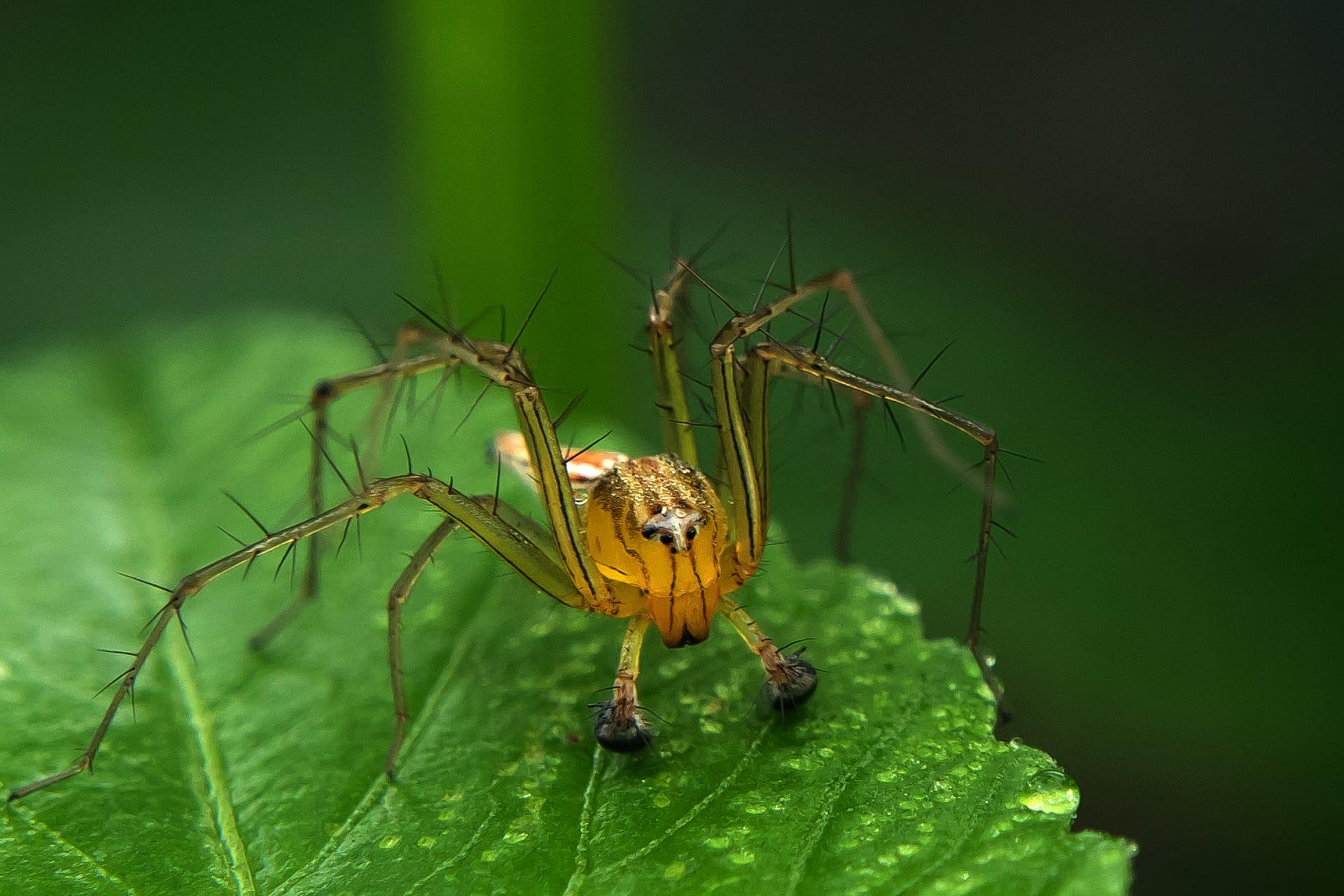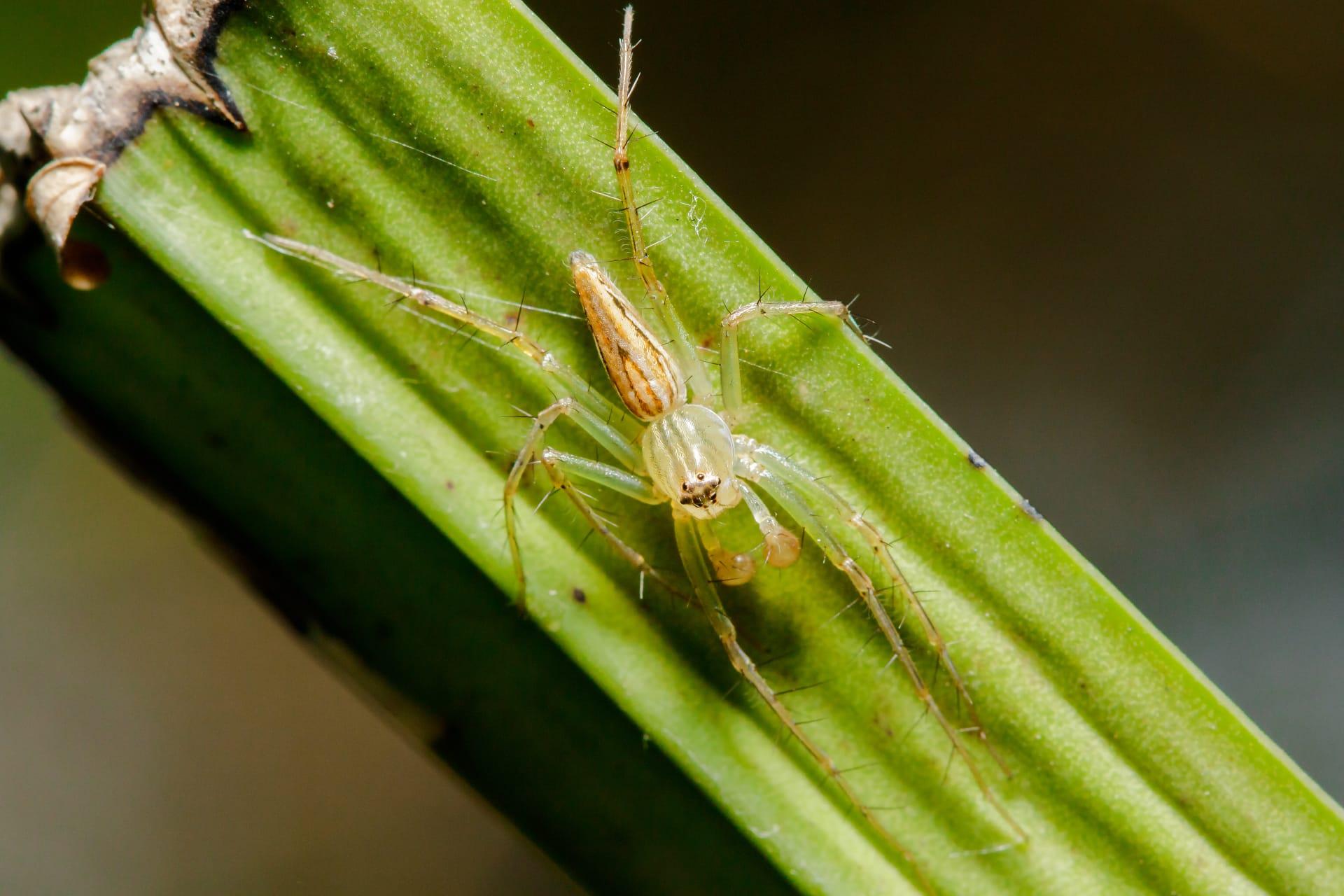Green Lynx Spider Trivia
- Home /
- Trivia Question /
- Animal /
- Green Lynx Spider Trivia
1
Question: What distinguishes the Green Lynx Spider in terms of appearance and size?
Answer: The Green Lynx Spider, scientifically named Peucetia viridans, is noted for its striking green coloration, which varies from bright lime green to a duller greenish-brown. Adult females typically measure about 0.6 to 0.8 inches (15 to 20 millimeters) in body length, while males are smaller, averaging around 0.4 to 0.6 inches (10 to 15 millimeters). They have long, spiny legs, aiding in their agility and hunting prowess. Their eye arrangement, with six out of eight eyes forming a hexagon, is a key identifying feature.
Question: How does the Green Lynx Spider hunt and what is its diet?
Answer: Green Lynx Spiders are skilled hunters, relying on stealth and agility. They don't spin webs for catching prey but instead pounce on insects from a distance, much like a lynx, which is how they got their name. Their diet primarily consists of various insects such as moths, flies, and occasionally even other spiders. They are especially beneficial in agricultural areas, as they help control pest populations. Their ability to jump and move quickly makes them efficient predators in their natural habitats.

2
Question: Is it true that the Green Lynx Spider is dangerous to humans?
Answer: This is a common misconception. While the Green Lynx Spider can bite if provoked or threatened, its venom is not considered dangerous to humans. The effects are usually mild, limited to redness and slight swelling at the site of the bite. These spiders are generally not aggressive towards humans and prefer to escape rather than confront when encountered.
Question: Can Green Lynx Spiders change their color for camouflage?
Answer: Another interesting but incorrect belief is that Green Lynx Spiders can change their color to blend into different environments. In reality, while their color may vary slightly depending on maturity, diet, and environmental factors, they do not actively change color like a chameleon. Their natural green hue provides adequate camouflage among foliage, aiding in their hunting and evasion from predators.

3
Question: What is unique about the reproduction process of the Green Lynx Spider?
Answer: The reproduction of Green Lynx Spiders is notable for the maternal care exhibited. Females lay eggs in a silken sac and aggressively guard it until the spiderlings hatch. The egg sac, usually containing up to 600 eggs, is attached to plants and the female may change locations if the environment becomes threatening. This protective behavior ensures a higher survival rate for the offspring.
Question: How does the Green Lynx Spider contribute to its ecosystem?
Answer: Green Lynx Spiders play a crucial role in their ecosystems as both predators and prey. By feeding on a variety of insects, they help maintain a balanced insect population, which is particularly beneficial in agricultural settings. They also serve as prey for birds, lizards, and larger spiders, thus contributing to the food web. Their presence is a good indicator of a healthy, biodiverse environment.

4
Question: Where can Green Lynx Spiders typically be found and what are their habitat preferences?
Answer: Green Lynx Spiders are commonly found in warm, temperate to tropical climates, prevalent across the southern United States, Central America, and parts of South America. They favor open, sunny habitats with abundant vegetation, such as fields, gardens, and forest edges. These environments provide ample hunting opportunities and places to lay their egg sacs. They are adept at adapting to various microhabitats within these regions.
Question: Do Green Lynx Spiders have any unique behaviors or adaptations?
Answer: One of the fascinating behaviors of Green Lynx Spiders is their ability to 'spit' a venomous, sticky substance when threatened, especially to defend their egg sacs. This substance can reach up to 8 inches (20 centimeters) and helps deter predators. Additionally, their spiny legs are not just for show; they aid in gripping prey and surfaces, enhancing their hunting efficiency. Their keen eyesight, a common trait among hunting spiders, is crucial for detecting and ambushing prey.

5
Question: Are Green Lynx Spiders solitary or social creatures?
Answer: Green Lynx Spiders are predominantly solitary creatures. They come together only for mating purposes and otherwise prefer to live and hunt alone. This solitary nature reduces competition for food and ensures that each spider can establish a territory with sufficient resources. However, the female exhibits social behavior by fiercely guarding her egg sac and young spiderlings until they are independent.
Question: How do Green Lynx Spiders affect human activities, particularly in agriculture?
Answer: Green Lynx Spiders are generally considered beneficial in agricultural settings. Their appetite for common pests like aphids, beetles, and other harmful insects makes them natural pest controllers. By reducing the pest population, they help protect crops and reduce the need for chemical pesticides. However, their presence in large numbers can occasionally be alarming to humans, despite their harmless nature to us. Their role in maintaining ecological balance makes them valuable allies in sustainable agriculture.